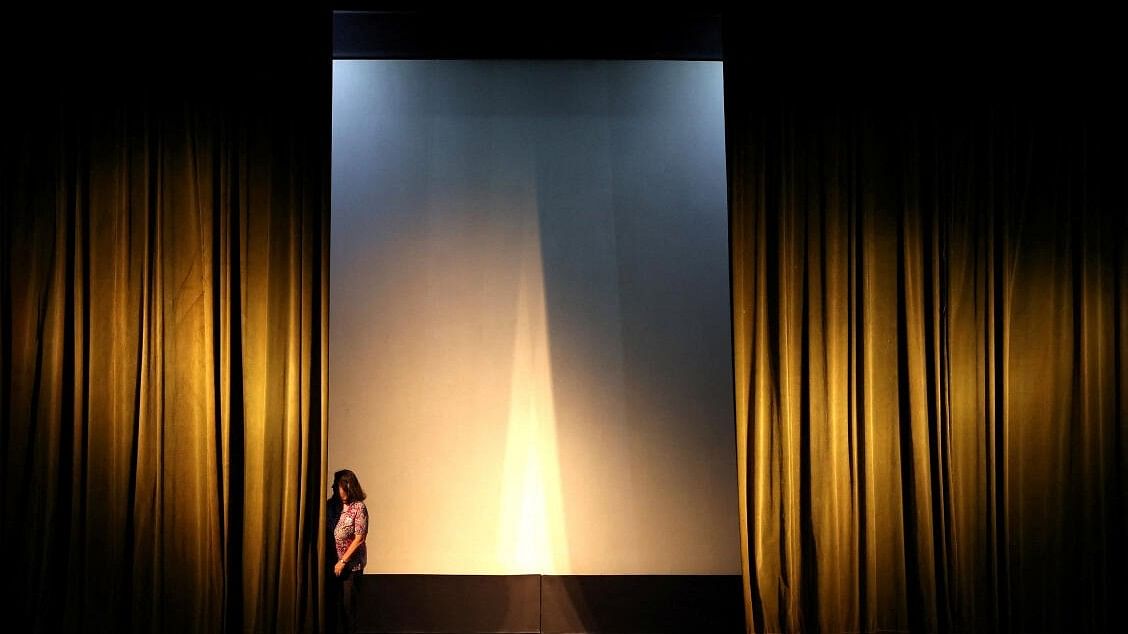
A woman prepares the stage before a performance. Representative image.
Credit: Reuters Photo
Dramas and plays were popular all over India before television usurped the entertainment space in the 1970s. Schools and colleges regularly used to stage dramas. My alma mater, the National High School and College in Bengaluru, where I studied from Class 1 until BSc, was known for dramas and artists. My middle school teachers, P R Srinivas Rao (PRS), C Sadashiviah (CS) and a few others, acted regularly. National College had a large group of theatre enthusiasts who later became famous as actors in Kannada movies. Notable among them were, ‘make-up’ Naani, G K Govind Rao, C R Simha, Padmanabha, Jayaram, who always acted as an old widow with a shaven head, and Kalyan Kumar.
Gender norms of the time meant male actors often portrayed female characters, with notable exceptions like Hema, a trailblazing actress who acted opposite Prof B S Narayana Rao in T P Kailasam’s Ammavara Ganda.
One of the students, C Nagaraj, did full justice to the female roles he donned. Though I am now 6-foot-3 inches tall, as a 13-year-old, I was barely 4-foot-8 inches. I too acted as Meena in Meena Maduve at Mysore. I can still deliver all my dialogue from that play!
Plays written by Kailasam, Parvathavani, and Shivarama Karanth were very popular and ran for many weeks to full houses. The most memorable ones among them were Undadi Gunda, Bahadur Gandu, Nam Company, Bandavala Illada Badayi, Kalahala Kuthuhala, Akka Pakka, Sundropa Sundru, and Anukulakke Obba Ganda.
Each performance was a delight, whether it was the comedic banter in Bahaddur Ganda or the amusing challenges in Ammavra Ganda. Talented actors like Jayaram and Padmanabha, along with Nani and Kalyan Kumar, brought these stories to life with their skilful performances.
The opening scene of Bahaddur Ganda is still etched in my memory. It starts with the man of the house calling his wife and addressing her as ‘Ley, Ley...’ which elicits an angry response from the woman of the house: “Why are you calling me Ley?’ The husband is quick to save his skin, saying, “Oh, you responded even before I could say ‘dee,’” to loud laughter and applause by the audience. The clever wordplay is evident. While ‘ley’ in Kannada and ‘dee’ in Tamil are both colloquial but disparaging ways to address a woman, together they make a respectful ‘lady’ in English.
The plays were intelligently written. And the dialogues were just the right combination of humour and satire without slipping into the realm
of vulgarity. Though female actors were few, female characters were portrayed with dignity without belittling societal norms but nevertheless questioning them. Naani, Padmanabha, Jayaram, and others did very well. G K Govind Rao would always act in serious roles, and his dialogue delivery was always powerful.
Though written from memory, which might have failed me in some
instances, these anecdotes capture the essence of a bygone era of theatrical brilliance.